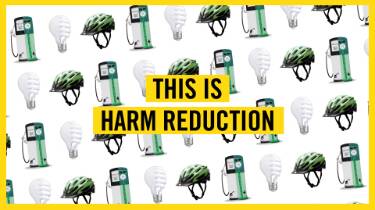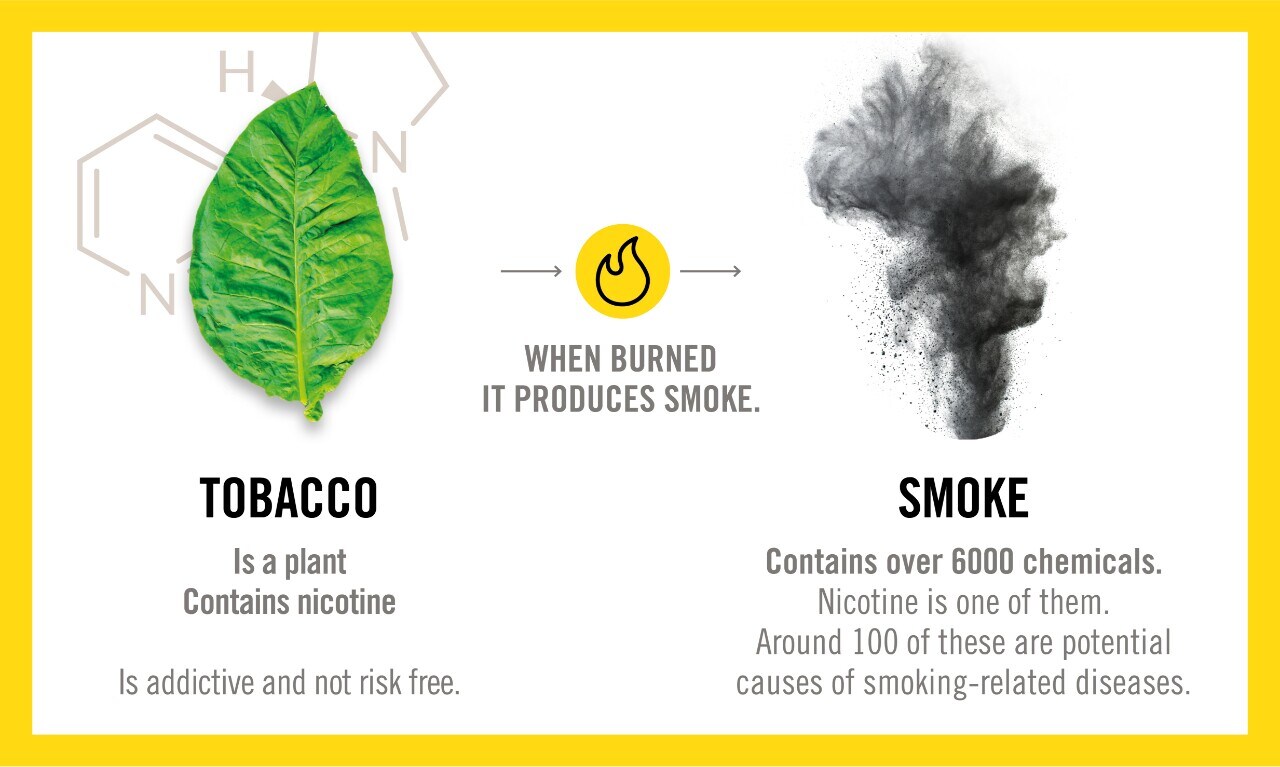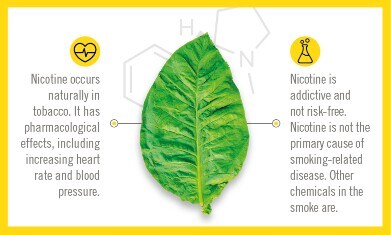THE BEST CHOICE
Everyone knows smoking is harmful and addictive. The best choice for any smoker is to quit cigarettes and nicotine altogether. But many don't, and these adult smokers deserve accurate information about better options and the science behind them.
HARM REDUCTION
Harm reduction techniques can reduce the negative impact of our choices on ourselves, others, wider-society or the environment.
BURNING IS THE MAIN PROBLEM
More than 6000 chemicals have been identified in cigarette smoke, 100 of which have been classified by public health authorities as harmful or potentially harmful. It is combustion that causes the production of high numbers and levels of harmful chemicals detected in cigarette smoke.

WHAT IS HARM REDUCTION?
Advances in science, technology and regulation have changed the way we live. Using these advances to reduce negative effects of potentially harmful behaviour is known as ‘harm reduction'. Harm reduction techniques can reduce the negative impact of our choices on ourselves, others, wider-society or the environment.
From electric cars to energy saving lightbulbs all are meant to provide a better option to consumers than continuing the unaltered original behaviour.

SMOKE IS THE PRIMARY CAUSE OF SMOKING-RELATED DISEASE
The production of the high number of harmful chemicals found in cigarette smoke comes from burning—not the tobacco itself. The smoke from burning any plant will contain dozens of harmful or potentially harmful chemicals.
Removing the combustion process, should reduce the levels of many of those chemicals.

There is a difference between tobacco, smoke and nicotine
The tobacco in a cigarette or a heated tobacco product comes from the tobacco plant. Nicotine occurs naturally in the tobacco plant and can also be synthesized. Nicotine is addictive and not risk free, but it is not the primary cause of smoking-related diseases. In terms of smoke, it is the burning of tobacco that produces the vast majority of harmful or potentially harmful chemicals in cigarette smoke.

WHAT IS NICOTINE?
Nicotine occurs naturally in tobacco leaves. Along with factors such as taste and ritual, it is one of the reasons people smoke.
Nicotine is not risk-free, and is addictive. But it’s smoke, not nicotine, which is the primary cause of smoking-related diseases. Certain people—including people who have or are at risk of heart disease, have diabetes, are epileptic, or are experiencing seizures—should not use products that contain nicotine.
Nicotine products should also not be used during pregnancy or while breast-feeding.
Similarly, minors should never use or have access to tobacco or nicotine-containing products.

